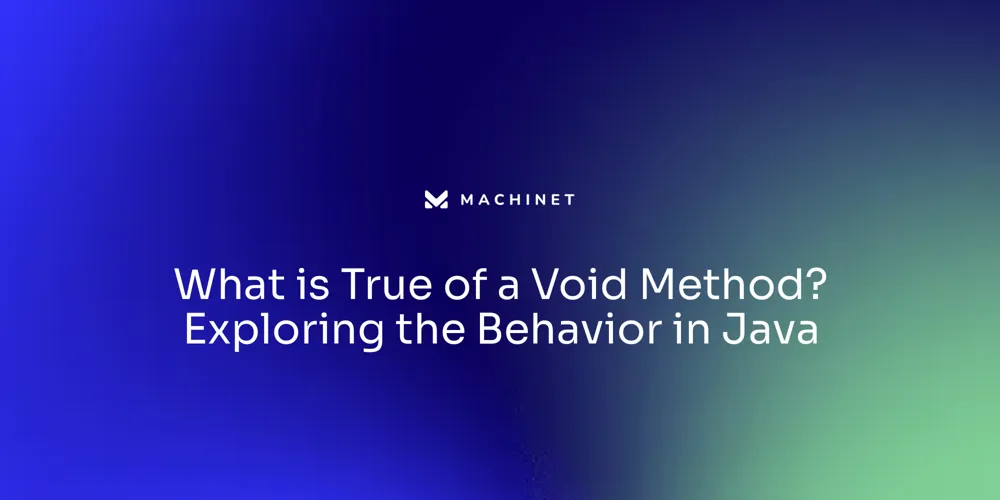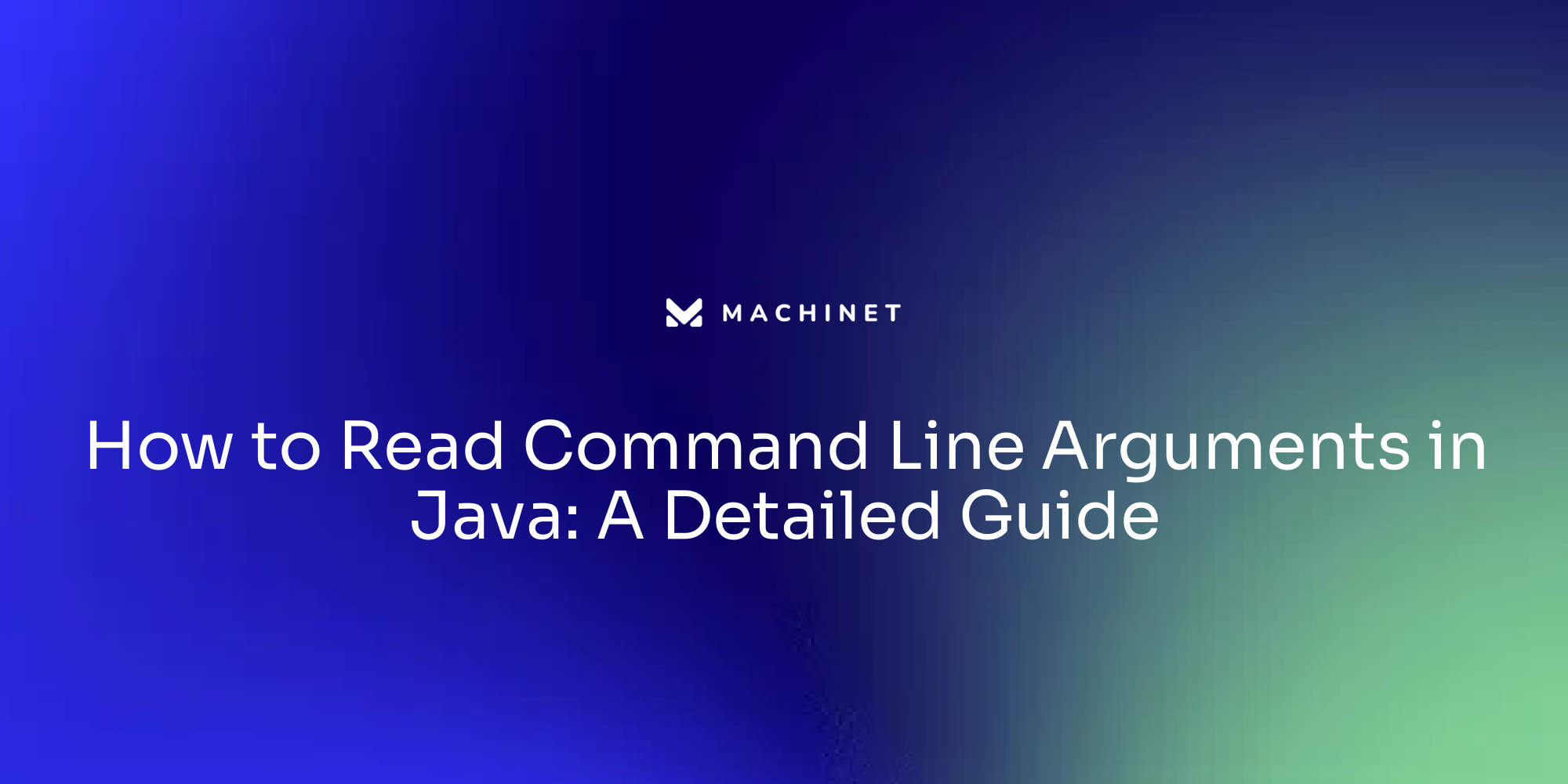
Table of Contents
- Behavior of Void Methods
- Throwing Exceptions vs. Returning Boolean Values
- Best Practices for Handling Void Methods
- Lazy Evaluation and Its Implications
Introduction
Java methods are a fundamental part of programming in Java, allowing developers to organize and execute code efficiently. There are two primary categories of methods: predefined and user-defined.
Predefined methods come built-in with Java, while user-defined methods are custom functions created by developers. One important keyword in Java's method framework is "void," which indicates that a method does not return any value.
Instead, void methods execute a series of actions or operations and then conclude. In this article, we will explore the behavior of void methods in Java, their significance, and best practices for handling them. We will also discuss the concept of lazy evaluation and its implications in Java programming. Join us as we delve into the world of Java methods and discover how they contribute to writing clean, maintainable, and efficient code.
Behavior of Void Methods
Java methods are essential tools for organizing and executing code, and they fall into two primary categories: predefined and user-defined. Predefined methods, such as System.out.println() and Math.max(), come built-in with Java and are ready for immediate use.
User-defined methods, on the other hand, are custom functions that developers create within their classes to encapsulate specific functionalities, enhancing code reusability and clarity. The void keyword plays a crucial role in Java's method framework.
It signifies that a method won't return any value. Instead, it executes a series of actions or operations and then concludes.
For instance, consider a method designed to read data from a file - this could throw several exceptions, such as file not found, access denied, or unreadable content. By employing void methods, we can perform necessary operations like handling these exceptions without the need for a return value.
As Java evolves, certain features are deprecated to improve the language's efficiency and security. For instance, Java 18 saw the deprecation for removal of finalization, as outlined in JEP 421. This move reflects Java's commitment to reliability, as finalization had been problematic since its inception. Developers are encouraged to prepare for these changes by exploring alternatives, such as disabling finalization entirely for their applications. In summary, Java methods, whether void or returning values, provide structure and control in programming, allowing developers to write clean, maintainable, and efficient code. As Java continues to advance, staying informed about language updates is crucial for writing code that not only functions well but also adheres to modern best practices.
Throwing Exceptions vs. Returning Boolean Values
In Java programming, understanding exceptions is key for writing robust applications. A void method can indicate a problem by throwing an exception, which is an object created during runtime errors. These exceptions disrupt the normal flow and, if not handled, can abruptly terminate a program.
Java's robust exception handling mechanism includes two main categories: checked and unchecked exceptions. Checked exceptions are part of a method's signature, declared with the 'throws' keyword, and must be handled or declared. Unchecked exceptions, like the 'NumberFormatException', don't need to be declared and can be handled at the programmer's discretion.
As James Gosling, the father of Java, pointed out, exceptions address the issue of ignored error codes, improving robustness and networking within the language. Despite the controversy surrounding checked exceptions, they were introduced with Java to encourage error handling. Studies show that refactoring code to handle exceptions effectively is a common practice, enhancing maintainability and bug resolution.
Best Practices for Handling Void Methods
In Java, the art of crafting method names goes beyond mere nomenclature; it's about enhancing code intelligibility and ensuring maintainability. By adopting clear and descriptive names, especially for void methods that perform actions without returning values, developers create a self-documenting codebase. This practice is rooted in the Single Responsibility Principle (SRP), which advocates for methods to embody a single, well-defined task, thereby preventing complexity and confusion.
Moreover, handling exceptions with due diligence is paramount. Proper exception management not only prevents unwanted crashes but also aids in debugging and future code modifications. As statistics reveal, a vast majority of Java class files consist of multiple methods with stable names and bodies, highlighting the importance of consistency in method naming for software maintenance and comprehension.
Recent advancements, like pattern matching in Java, underscore the evolution of the language, allowing values to be matched against patterns with variables and conditions, fostering more readable and intuitive code. This aligns with the broader trend of Java's ongoing development, as noted by Sharat Chander from Oracle, who emphasizes the vibrant community's role in keeping Java's heartbeat strong. Embracing these practices ensures that Java code remains robust, efficient, and, most importantly, maintainable as the language continues to evolve.
Lazy Evaluation and Its Implications
Java's syntax and semantics offer a spectrum of evaluation strategies, including the concept of lazy evaluation. In Java, lazy evaluation is a technique where computations are deferred until their results are required, potentially enhancing performance and optimizing resource utilization. For instance, the Stream API introduced in Java 8 allows for lazy evaluation of streams, enabling efficient processing of sequences of values with operations like filtering and mapping.
This approach contrasts with eager evaluation, where expressions are evaluated as soon as they are encountered in the code. The benefits of lazy evaluation are not just theoretical. For example, the Vector API discussed in JDK 17 demonstrates performance improvements through targeted enhancements.
Furthermore, the canonicalization of induction variables in Java benchmarks shows that compilers like C2 and GraalVM JIT can optimize code by eliminating unnecessary computations, exemplifying the practical applications of these concepts. The evolution of Java's language features, such as the introduction of functional programming elements and the enhancement of the protocol for launching Java programs, reflects a commitment to simplifying the learning process for students and increasing the language's efficiency. These changes, like the preview of unnamed classes and instance main methods in JDK 21 and 22, embody the ongoing efforts to evolve Java's syntax and semantics to meet modern programming needs while ensuring that code remains maintainable and understandable.
Conclusion
In conclusion, Java methods are vital for organizing and executing code efficiently. Void methods, which do not return a value but perform actions or operations, play a key role in handling exceptions and improving code readability.
To write clean and maintainable code, it is crucial to use clear and descriptive names for void methods that embody a single task. Proper exception management prevents crashes and aids in debugging.
Lazy evaluation, deferring computations until needed, can optimize performance and resource utilization. The Stream API in Java 8 showcases this concept effectively. Staying informed about language updates and exploring alternatives to deprecated features is essential for adhering to modern best practices. By following these best practices and staying updated with Java's evolving features, developers can ensure their code remains robust, efficient, and adaptable.
AI agent for developers
Boost your productivity with Mate. Easily connect your project, generate code, and debug smarter - all powered by AI.
Do you want to solve problems like this faster? Download Mate for free now.




